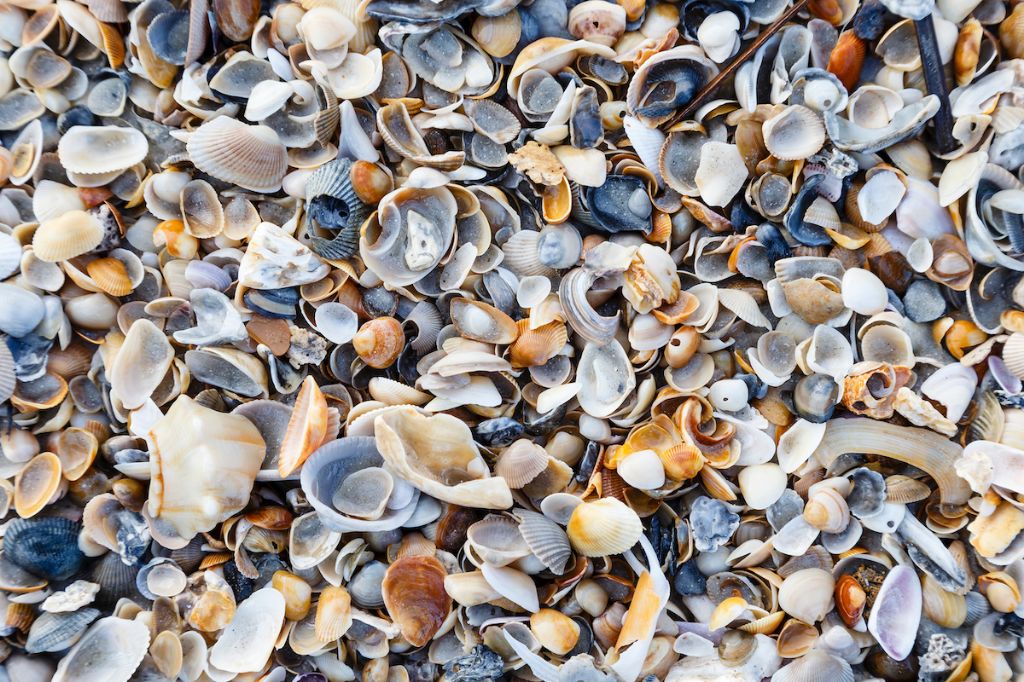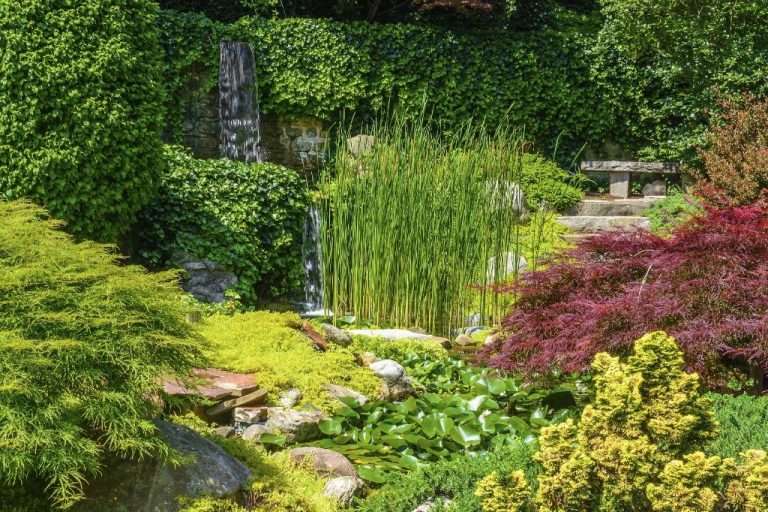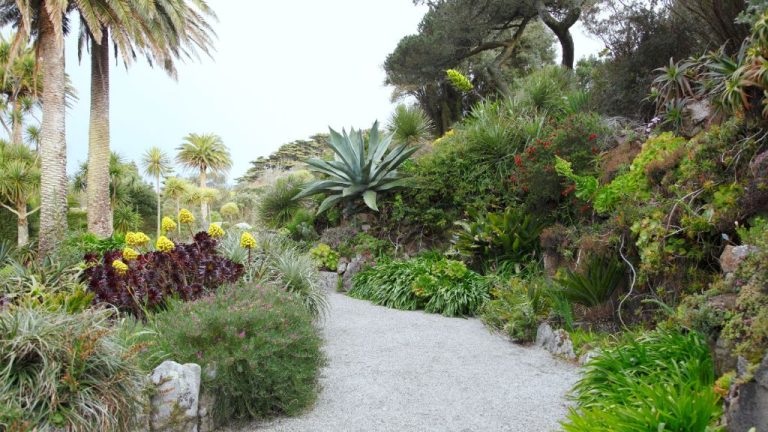Coastal-Inspired Garden Design: Capturing Coastal Vibes
Coastal garden design captures the essence of gardens by the sea, bringing a relaxed, casual vibe with natural elements reminiscent of beaches and oceans. This design style has surged in popularity in recent years as more people long to infuse that laidback, seaside feeling into their own outdoor spaces.
Coastal gardens emphasize natural textures and materials like weathered wood, seashells, pebbles, and sand. Billowy grasses and palms evoke the windswept dunes and sea breezes of the shoreline. Cool blue, green, and white color schemes recall the hues of sea and sky, accented by punches of coral, yellow, and teal. The overall look is breezy, beachy, and tranquil.
The appeal of coastal design lies in its ability to transport homeowners to fond memories of vacations by the water. These gardens conjure up images of seaside cottages, lighthouses, driftwood, sailor’s rope, and sun-bleached wooden furniture. Anywhere people want to recreate the sights, scents, textures, and feelings of the coast, a coastal-inspired theme can infuse that magic into the landscape.
Incorporating Natural Materials
Coastal gardens beautifully incorporate natural materials like stones, seashells, and driftwood to evoke a beachy vibe. Using these elements connects your garden space to the textures and essence of the coast. When incorporating natural materials, aim for an artful, natural look rather than a kitschy overload of beach décor.

Seashells and smooth, rounded beach stones can be placed thoughtfully as accents throughout garden beds or pathways. Use them to line the edges of planting beds or arrange them in organic patterns among plants. Driftwood makes an excellent garden accent as well. Look for weathered, grey pieces to place vertically amid plants or horizontally along the ground as borders. You can also use driftwood to make simple garden structures like plant supports or dividing screens.
The key is to blend these natural materials in tastefully, rather than going overboard. Space them out attractively rather than clustering too many pieces together. Allow plants to take center stage and use beach-inspired accents to support them. This creates a coastal garden with authentic, organic style.
Choosing the Right Plants
When designing a coastal-inspired garden, it’s crucial to choose plants that can withstand the salty sea air, wind, and sandy soil. Salt-tolerant and wind-resistant plants are ideal for replicating beach vibes while still thriving. Some great options include:
Daylilies are a classic coastal perennial that add vivid color. Their grassy foliage holds up to wind and salt spray (BHG).
Beach rose (Rosa rugosa) features fragrant, ruffled blooms and thrives in sandy soils (Lawnlove).
Blanket flowers (Gaillardia) bloom all summer with bold flowers in sunset colors. They tolerate drought, wind, and salt (Plant Delights).
Baccharis halimifolia or Groundsel shrub has silvery foliage that handles coastal conditions beautifully.
When selecting plants, focus on natives and varieties specifically bred for coastal landscapes. Visit local nurseries to find plants suited for your region.
Creating a Beachy Vibe
One of the best ways to capture that relaxed, coastal feel in your garden is by incorporating design elements that evoke thoughts of the beach. Using sand, boardwalks, beach umbrellas, Adirondack chairs, and other seaside-inspired features can transport your landscape to the shore. However, it’s important not to go overboard. You’ll want to strike the right balance between creating a beachy vibe and avoiding a kitschy, theme park-like atmosphere.
Soft, natural sand makes an excellent material for sectioning off different areas of your garden or defining winding paths. Its tactile texture underfoot instantly conjures images of sunny shorelines. Just be mindful of drainage and erosion issues if you use a large quantity of sand. Boardwalks are also ideal for garden pathways, providing both visual interest and practical purpose. Their weathered, coastal look blends beautifully into beach-inspired plantings.
For seating areas, choose classically coastal furniture like brightly-hued Adirondack chairs and retro metal patio sets with mesh seats. Beach umbrellas will provide shade on hot summer days. Go for stripes or bold colors and patterns. Just take care not to overwhelm the space. A single beach umbrella, a pair of chairs, and a small bistro table is likely sufficient. You want to suggest the seaside without screaming “beach vacation rental.” Subtle touches allow your plant choices and color scheme to shine.
Inspiring Color Palettes
Coastal gardens are known for using soft, muted color palettes inspired by the colors found at the beach and along the coastline. When selecting plants and other elements for a coastal garden design, focus on light blues, grays, taupes, and greens reminiscent of the sky, water, sand, and coastal foliage. [1]
Some classic coastal color combinations to try include:
- Light blue with white and pale green
- Sand and driftwood tones
- Muted blues and greens
- Touches of brighter colors like yellow or coral for accent
Don’t be afraid to mix different shades of blue-green together to mimic the colors of the ocean. Varying shades create visual depth and interest. White is also an important coastal color for gardens, representing clouds, sea foam, shells, and sand. Use white blooms like gardenias, roses, lilies, and daisies throughout planting beds. Touches of sunny yellow or coral flowers also evoke beachy vibes.
Overall, the color palette for a coastal garden should feel light, airy, soothing, and reminiscent of the colors found where the land meets the sea. Use a variety of blue-green hues along with white, tan, and pale yellows to design a color scheme with true coastal inspiration.
[1] https://www.gardenia.net/gardens/garden-styles/coastal-garden
Thinking Nautically
Adding nautical elements to your coastal-inspired garden is a fun way to capture the essence of the seaside. Incorporate pieces like rope, buoys, anchors, and ship wheels to infuse your space with a maritime vibe. According to Etsy, there are many handmade nautical yard decor items perfect for coastal gardens.
Rope can be used in creative ways, like wrapping it around porch railings or framing garden beds. Hang buoys from trees or fences. Anchor larger items in place with a rustic ship anchor. A ship’s wheel makes a striking focal point, especially placed against a wall or fence. Check out stores like Design Toscano for all kinds of nautical accents to incorporate.
Nautical elements add visual interest while reinforcing the coastal vibe. Use them generously throughout your garden for a cohesive look. They are versatile, working well in cottage gardens, tropical landscapes or minimalist designs.
Emphasizing Texture
Coastal gardens often emphasize natural textures to evoke the look and feel of the seashore. Driftwood, seashells, pebbles, and sand can add striking visual interest to plantings and hardscaping. According to Homes & Gardens, using a variety of natural materials creates an authentic coastal vibe.
Add weathered driftwood to planting beds or use it to make rustic edging around pavers. Seashells can be artfully placed in the garden or used to make winding paths. Pebbles and crushed shells are ideal for walkways, while sand can fill gaps between stones or shells. Scatter shells or pebbles into empty pots or planters for texture. Allow plants like grasses and succulents to grow between stones or pebbles to soften the hardscape.
By thoughtfully incorporating natural materials like driftwood, seashells, pebbles, and sand, you can emphasize delightful textures that evoke the essence of the seashore.
Considering Water Features
Water features like ponds, fountains, and container water gardens can add a lovely coastal element to your garden design. The sound of moving water evokes the sounds of the ocean and can provide a relaxing ambiance. According to Gardenia, features like a pond or fountain designed with a coastal influence “will stimulate the senses with the soothing sounds of splashing water and reflections of light dancing across it.”
When including a pond or fountain, consider adding coastal elements like seashells, pebbles, driftwood, or other natural materials that can withstand the water. Blue, gray, and green hues can also help the water feature blend into a coastal landscape. Container water gardens planted with grasses, iris, lilies, and other water-loving plants are lower maintenance than installed water features.
While lovely, it’s important to note that water features do require routine maintenance to keep the water clear and prevent algae growth and clogs. This involves regular cleaning, testing water chemistry, and adding treatments as needed. If opting for a pond or fountain, be prepared for the time investment involved in proper upkeep.
Choosing Coastal-Inspired Garden Structures
When designing a coastal-inspired garden, carefully chosen structures like pergolas, gazebos, and arbors can help evoke seaside vibes. Driftwood is a fantastic material for building garden structures with a beachy aesthetic. Its weathered, organic texture and silvery-grey color are reminiscent of materials washed up on the shore.
Pergolas made from driftwood logs or boards make excellent additions to coastal gardens. They cast beautiful dappled shade and can be incorporated with climbing vines or roses for an indoor-outdoor feel. For a relaxed vibe, an asymmetric driftwood pergola looks right at home by the sea. Add privacy while maintaining views by slatting the pergola with spaced-out driftwood planks.
Gazebos crafted from driftwood are ideal resting spots for overlooking the garden. For an authentic nautical look, incorporate details like porthole windows and a weathervane on top. Or build a simple open-air driftwood pavilion to create a designated sitting area or outdoor dining space.
Arbors made from driftwood can serve as graceful garden entryways. You can also use arbors to divide different “rooms” within your coastal garden. For a showstopping look, plant climbing roses or jasmine to adorn the arbor. The sight and scent will make it feel even more like an oceanside retreat.
For DIYers, check out plans for constructing coastal garden sheds using Fund driftwood, pallets and other reclaimed materials. Choose a simple A-frame or cottage-style design and decorate the interior with nautical maps, buoys and fishing nets for a fun beachy aesthetic.
Conclusion
Coastal gardens beautifully capture the laidback vibes of seaside living through intentional design choices. By incorporating natural materials like wood, rope, and seashells, choosing salt and drought-tolerant plants, and using colors and textures reminiscent of sand and surf, you can create a tranquil oasis with maritime inspiration. The sound of moving water and structures like arbors and trellises evoke sandy boardwalks and piers. Most importantly, a coastal garden connects us to the serenity and restoration of the ocean anytime we spend time immersed in this natural landscape. With some thoughtfully chosen elements, you can bring the essence of the seaside home.





